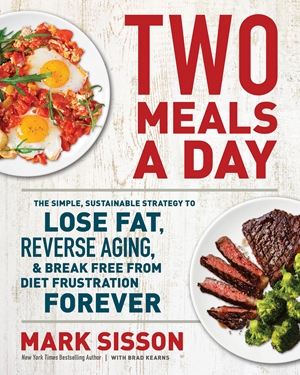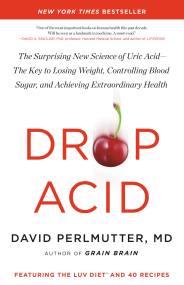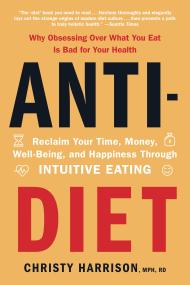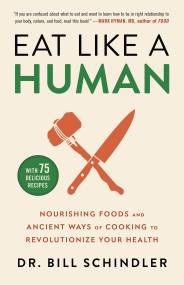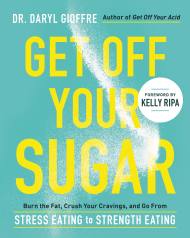Shopping Cart
Two Meals a Day
The Simple, Sustainable Strategy to Lose Fat, Reverse Aging, and Break Free from Diet Frustration Forever
Description
Are you sick and tired of struggling through regimented diets that work for a minute and then become unsustainable? Are you confused about the changing fads and ongoing controversy over what’s healthy and what’s not? It’s time to embrace a simple, scientifically validated plan that transcends gimmicks and avoids the stress of regimented macros and mealtimes.
Health and fitness expert Mark Sisson presents a comprehensive lifestyle approach based on the principles of intermittent fasting. He’ll teach you how to gracefully burn body fat while keeping your energy, focus, and positive attitude.
In TWO MEALS A DAY, you’ll implement an eating style that’s incredibly nourishing and easy to adhere to for a lifetime, dial-in a winning fitness routine, prioritize recovery, and learn powerful strategies for overcoming self-limiting beliefs and behaviors. When you’re ready to level up, you’ll implement some cutting-edge techniques to achieve stunning body composition breakthroughs. Packed with forty-two delicious meals in a variety of categories, TWO MEALS A DAY has everything you need to hit the ground running and pursue enjoyable and lasting lifestyle transformation.
What's Inside
Introduction
I used to run almost entirely on carbs, chowing down three or four robust grain-based meals every day. I kept a reliable supply of packaged processed energy bars and other snacks in my home, car, office, and travel bag. As soon as I finished breakfast, I would start thinking about lunch. A couple of hours after my typically huge dinners, I would wander into the kitchen to nibble on something while relaxing in the evening. Because I burned so much energy with extreme endurance workouts, I never got fat—unlike sedentary people with similar eating patterns. Yet even with my impressive physique and no obvious adverse health consequences, my hunger, appetite, and meal planning ran my life. I did not realize the culprits at the time, but gluten and other dietary toxins were destroying my intestinal tract to such an extent that I had to structure my running routes around bathroom locations.
Nearly two decades ago, I switched to an ancestral-style diet free from processed sugar, grains, and industrial seed oils and experienced a health awakening beyond my wildest dreams. In addition to healing my lifelong digestive dysfunction, my new eating habits meant that I was no longer dependent on food to stabilize my energy, mood, and cognitive functioning. By ditching high-carbohydrate, high-insulin-stimulating foods, I was able to access and burn stored body fat around the clock. I was almost never hungry and required far fewer calories to attain total satisfaction at every meal. It felt like an incredible gift to escape from the prison of carb dependency and transition into a new existence, one in line with our human genetic expectations for health that were honed through 2.5 million years of evolution. Contrary to modern marketing hype and the flawed science that’s likely been programmed into your brain, we humans can do just fine without stuffing our faces morning, noon, and night and snacking incessantly to maintain energy between these round-the-clock feedings.
Essentially, my life’s work has boiled down to this: helping others escape lifelong carbohydrate dependency driven by the Standard American Diet (SAD) and become what I affectionately call a fat-burning beast. This is the default human metabolic state that has been hardwired into our genes but has been egregiously compromised by the overconsumption of high-carbohydrate processed foods and toxic industrial seed oils (e.g., canola, sesame, soybean, and sunflower oils), which destroy our natural ability to burn stored energy. While it may take some sustained and devoted effort to reprogram your genes away from reliance on carbs, depending on the severity of your metabolic damage, the beast within you is ready to emerge when you choose the most nutritious and satiating foods, reduce meal frequency, and unlock the amazing healing powers of fasting.
Welcome to Two Meals a Day, a simple, sustainable, highly effective strategy to help you lose excess body fat; increase energy and focus; minimize your risk of diabetes, cancer, heart disease, and cognitive decline; and enjoy your maximum healthspan—a long, healthy, happy, high-energy life lived all the way to the end. Two Meals a Day offers a refreshing solution to the incredible frustration of carrying excess body fat. It transcends almost all the controversy and confusion over what constitutes the most healthful diet and finally does away with the pain, suffering, and sacrifice we’ve come to associate with dieting. I’m pretty fired up as we begin this journey together, because misguided health gurus, manipulative corporate marketing techniques, and so-called experts in government, in academia, and on the all-powerful internet are perpetuating the ridiculousness and the suffering of dieting with horrible advice and a fundamental misunderstanding and misrepresentation of human genetics and evolutionary biology. In case you haven’t heard, here’s the issue at hand: We eat too much of the wrong foods too often. It’s making us fat, tired, sick, and it’s slowly but surely killing us.
Recent science has made the surprising discovery that it’s not laziness or lack of willpower that has made modern humans unwell but rather the hormone dysregulation caused by a daily pattern of high-carbohydrate breakfasts, lunches, and dinners along with frequent snacking and ingestion of toxic industrial oils. This pattern of eating has violently disrupted our magnificent evolutionary ability to burn stored body fat around the clock as a steady and reliable source of energy. Instead, we have become dependent on regular doses of ingested calories to fuel our busy days. The common phenomenon of feeling “hangry” after skipping even a single meal—a ridiculous notion from an evolutionary perspective— blatantly exposes this hormone dysregulation.
Even many enlightened folks who know to stay away from processed sugars, sweetened beverages, refined grain-based foods (wheat, corn, rice, pasta, cereal), and industrial seed oils remain unhealthy and overweight because they eat and snack too much. Consider the ketogenic diet, which has risen to popularity in recent years. While many who followed a well-formulated ketogenic diet have shed fat and improved their health, the plan has also been widely misappropriated as an opportunity to stuff one’s face with “keto-approved” high-fat meals and snacks in a misguided attempt to trigger ketone production in the liver. We’ve forgotten keto’s roots as an evolution-honed survival mechanism. Ketone production occurs in the liver to supply a steady source of fuel for the brain in times of starvation or in the absence of dietary carbohydrates. In reality, you access the main benefits of keto through fasting, not feasting on high-fat foods.
It’s time to reframe our flawed and dated belief systems and behavior patterns relating to food and meals. It’s as simple as this: if you want optimum health, body composition, and longevity, you have to do two things:
- Ditch processed foods in favor of wholesome foods
- Eat less frequently
Two Meals a Day will help you develop one of the most important health attributes imaginable: metabolic flexibility. This genetically preprogrammed superpower is the ability to burn a variety of fuel sources, especially stored fat, based on your body’s needs at any given time. Paradoxically, you were born with robust metabolic flexibility, but it began to atrophy as soon as you were fed all manner of crunchy and mushy carbs as an infant. The good news is that you can quickly reclaim your genetic fat-burning abilities. Metabolic flexibility allows you to feel great all day long, with stable mood, energy, cognitive functioning, and appetite, whether or not you eat regular meals. I believe that reigniting your metabolic flexibility is the holy grail of all health pursuits. With it, you can naturally derive energy from a range of sources: the fat on your plate of food or the fat on your butt, belly, or thighs; the carbohydrates in your meal, the glucose in your bloodstream, or the glycogen in your muscles; and even from ketones, the superfuel that your liver makes when you’re fasting or restricting dietary carbs. The best part is that your body doesn’t care where those calories came from, because your source of calories to burn will move seamlessly from one substrate (fuel source) to another depending on your immediate energy needs.
Metabolic flexibility allows you to cruise through life not having to think about how many calories or grams of carbs you “earned” because you ran on the treadmill or how much protein you’ll need to consume after your weight-lifting session to avoid muscle breakdown. Most important, metabolic flexibility will free you from the tyranny of hunger, appetite, and cravings, because your body will always be primed to get energy from body fat, glycogen (the stored form of carbohydrate in the liver and muscle tissue), and ready-made ketones. Ultimately, you’ll stop living at the edge of “how much food can I stuff down my face and not get fat” and get to the point where you might want to explore how little food you can eat and still remain completely satisfied and energized every single day for the rest of your life.
If metabolic flexibility describes the ability to skip meals and burn fat, metabolic efficiency describes the result: the life-changing, life-extending ability to thrive on fewer calories. I’m not suggesting you must starve yourself or live as an ascetic to be healthy. What I’m talking about is enjoying your life to the fullest and eating delicious and highly satisfying foods to your heart’s content. I enjoy lavish meals as much as anyone, and I never deprive myself when I’m hungry. That said, I also believe that one fabulous plate of fresh sashimi or a grass-fed rib-eye cooked to perfection can be more pleasurable (and ultimately more healthful) than all-you-can-eat fish and steak! I’m also not inclined to tarnish the lingering taste sensations and satisfaction of a gourmet meal by stuffing some sugar down at the end, just because dessert is a cultural mainstay.
Unfortunately, when you are locked into a carbohydrate-dependent eating pattern, you are compelled to eat an excessive amount of calories every day because your fat-burning factory is shut down and your appetite and satiety hormones are out of whack. The classic potato-chip ad campaigns of decades past are excellent examples. “Betcha can’t eat just one” was the slogan for Lay’s potato chips, and “Once you pop you can’t stop” encouraged eating Pringles. These ads revealed the disturbing reality that nutrient-deficient foods trick your brain into eating more in a futile attempt to obtain nourishment.
The idea here is that when you can burn body fat and make ketones at any time, and your appetite and satiety hormones are optimized, you simply don’t need as much food—even in pursuit of peak performance and maximum pleasure. I like to envision my metabolism as a carefully constructed closed-loop system that can operate perfectly well for days, if need be, without any visits to the fuel pump (i.e., without ingesting calories). A closed-loop metabolism ensures that you don’t lose energy, muscle mass, strength, or your happy disposition. This honors our evolutionary imperative to not waste energy. In an effort to achieve widespread adoption of this empowering new strategy, I hereby declare a revision to global dietary lexicon: the popular term intermittent fasting is changed to the more apropos term (and mindset!) intermittent eating!
It’s All About Insulin
Insulin is the key metabolic hormone that presides over all manner of cellular and homeostatic functions in the body. Insulin’s primary role is to transport nutrients such as glucose, amino acids, and fatty acids from the bloodstream into cells. Today, we overburden our extremely delicate hormonal mechanisms in the pancreas (where insulin is manufactured) and the liver (which regulates glucose levels in the bloodstream) by consuming too many carbohydrates. Most dietary carbohydrates are converted into glucose upon ingestion. A small amount of this energy is burned right away, while the excess is quickly removed from the bloodstream and rerouted by insulin. Insulin transports the extra glucose to the muscle cells and the liver, where it is either converted into glycogen (the stored form of glucose) or triglycerides (the stored form of fat). Excess blood glucose is highly toxic—this is why a diabetic might pass out without a timely insulin injection. If you are not burning up lots of glycogen with an ambitious workout regimen, your extra calories will end up in fat-storage depots throughout your body.
When modern humans slam down high-carbohydrate breakfasts, lunches, and dinners, suck down sweetened beverages, and indulge in sugary snacks and treats, insulin must be continually pumped out to deal with the glucose burden created by these foods. Because insulin is a storage hormone, SAD eating patterns lock us into fat-storage mode around the clock. By contrast, low insulin levels allow the counterregulatory hormone glucagon to pull nutrients from storage into the bloodstream, where they’re burned for energy. Three squares a day is a wholly modern construct and completely foreign to our evolutionary experience as rough-and-tumble hunter-gatherers who evolved to be fat burners in a feast-or-famine pattern.
The Two Meals a Day approach gets you back into the feast-or-famine rhythm that aligns with your genetic predisposition for maintaining health. This dietary modification can save your life, because when you overproduce insulin for too long—a condition known as hyperinsulinemia—you eventually develop the disease state known as insulin resistance. This happens over time as your cells become desensitized to the signals given off by insulin (because of chronic overproduction) and don’t accept the package of nutrients insulin delivers to their doorstep. The no vacancy sign at the cell motel results in too much glucose remaining in the bloodstream. This is the start of big trouble. The liver can- not detect your blood glucose levels, instead relying on insulin signaling to decide when to release more glucose into the bloodstream. Sensing elevated blood insulin levels, the liver is deceived into releasing more glucose in a futile attempt to get you back to homeostasis. Instead, too much insulin and too much glucose in the bloodstream send you spiraling into decades-long disease patterns. Many medical experts believe insulin resistance is the number one health crisis facing modern-day humans across the globe.
Insulin resistance causes oxidative damage (a.k.a. free-radical damage), system-wide chronic inflammation, and glycation—the binding of excess glucose molecules to important structural proteins in organs throughout the body. This causes widespread dysfunction and disease patterns that affect important organs and systems. It’s sobering to realize that just as the sugar in cotton candy sticks to your fingers, the sticky composition of glucose molecules tends to adhere to the delicate endothelial cell lining on the walls of your arteries and gets you started on the road to heart disease. It also sticks in the retinal microvascular endothelium to mess with your eyesight and attaches to collagen and elastin to wrinkle your skin.
Oxidation, inflammation, and glycation are the driving factors in heart disease, cancer, and accelerated aging. The direct association between atherosclerosis and a high- carbohydrate, high-insulin-producing diet is finally becoming a matter of consensus. This science replaces the flawed and dated lipid hypothesis of heart disease, which erroneously blames dietary cholesterol and saturated fat for causing heart disease. As you will learn in detail shortly, reducing excess body fat and avoiding chronic disease patterns can be achieved through minimizing insulin production rather than by restricting caloric intake and increasing caloric expenditure.
Honoring Our Ancestors
I’ve covered food choices extensively in other books such as The Primal Blueprint and The Keto Reset Diet. In this book, I’m going to suggest that you draw on your favorites from the surprisingly simple list of “ancestral” foods that fueled human evolution. Examining human health in an evolutionary context is without a doubt the most profound and exacting scientific study of all time. The legendary geneticist and evolutionary biologist Theodosius Dobzhansky reinforced this point in a highly acclaimed 1973 essay titled “Nothing in Biology Makes Sense Except in the Light of Evolution.”
Following is a list of the ancestral foods that have made us human for the past two million years: meat, fish, fowl, eggs, vegetables, fruits, nuts, and seeds. I left off insects so you’ll continue reading, but of course they are technically included in the evolutionary list and are still enjoyed today in many cuisines and indigenous populations. I also make concessions to allow for the inclusion of healthful modern foods such as organic high-fat dairy products and high-cacao-percentage dark chocolate. Noticeably absent are today’s heavily processed, nutrient-deficient sugars, grains, and industrial seed oils. Bestselling author Michael Pollan memorably and accurately called today’s packaged, processed fare “edible foodlike substances.” Sadly, these substances make up a huge percentage of our total caloric intake today, in the process crowding out the opportunity to enjoy truly nutritious and satisfying foods. Dr. Loren Cordain, author of The Paleo Diet and one of the forefathers of the Paleo diet, cites a statistic: 71 percent of the calories in the grain-based Standard American Diet come from foods that were wholly absent during Paleolithic times.
You can enjoy a Two Meals a Day lifestyle whether you follow a vegan, vegetarian, Paleo, keto, carnivore, or any other eating strategy. It is important to remember, however, that skipping meals doesn’t give you license to be indiscriminate when it’s time to eat. You absolutely must ditch toxic processed foods and emphasize wholesome, nutrient-dense, ancestral-style foods in order to succeed. You cannot achieve metabolic flexibility while engaging in the wildly excessive intake of processed carbs and industrial oils in the SAD. That said, I think it’s time to back off a bit from some of the dogma and intense scrutiny over food choices that’s so prevalent these days in order to honor some big-picture objectives:
Eat nutrient-dense foods of your personal preference—within ancestral guide- lines, of course.
Ditch the alarmingly destructive habit of snacking or eating frequent small meals. Snacking disrupts fat burning, increases insulin swings during the day, and increases overall daily caloric intake.
Honor your hunger and satiety signals at all times.
Two Meals a Day is a great place to start, but as you build momentum on this journey, this guideline will likely become your maximum meal frequency rather than a minimum or an average. I actually thought for a moment about calling this book The 1.5 Diet! However, I want you to feel confident and comfortable that you “got this” when it comes to escaping the cultural norm of regimented meals and quickly being able to thrive on a haphazard and spontaneous eating pattern in which you rarely eat more than two full meals a day and occasionally less than that. You will do everything by choice, not because you are trying to adhere to a regimented program in pursuit of a short-term goal. You will get to the point where eating fewer meals and not snacking feels comfortable, easy, and intuitively correct.
If you love to eat, and recoil at the thought of passing up a dining opportunity, please understand that I support your enjoyment of life and consumption of indulgent meals to your heart’s content. Take it from me: I’ve gone from being a young guy who ate more food more often than anyone I knew to someone who eats only when I’m truly hungry and savors every bite that goes into my mouth. If a gourmet offering is not at hand, I simply won’t eat. This sometimes happens when I’m traveling and away from good choices or am engrossed in work or play. I don’t consciously strive to skip meals, but I often simply forget to eat. When you regulate your appetite and metabolic hormones with the strategies presented in this book, you’ll discover a remarkable ability to naturally stabilize hunger, mood, energy, and satiety by eating fewer meals and consuming fewer calories. Metabolic efficiency drives longevity, while caloric excess is one of the most prominent drivers of accelerated aging and disease.
When you develop metabolic flexibility and metabolic efficiency, you will be able to go with the flow and not worry about adhering to regimented meal patterns to keep your energy level steady. You’ll be free from the prison of food obsession. When you reclaim your human genetic birthright as a fat-burning beast, dropping excess body fat will be as easy as putting your hand on a dial and turning it to the desired setting. Lower your insulin production, and you lower your body fat—it’s (almost) as simple as that! Metabolic flexibility allows you to take control of your life and your daily schedule and sustain peak cognitive and physical performance without needing to eat regular meals or snacks. While losing some inches and getting new clothes is certainly a rewarding manifestation of success, the wide-ranging sense of freedom and empowerment you experience with metabolic flexibility is perhaps the richest reward of all.
Excelling in the Essentials
We are going to proceed slowly and methodically on this journey together, because I want to make sure you don’t struggle or feel intimidated by any part of the process. You don’t have to stress about counting calories, painstakingly track macronutrient ratios, or traffic in the dogma and rigidity of many niche diets. Instead, you are going to focus on the big- picture essentials of metabolic flexibility, as follows:
- Eliminate nutrient-deficient processed Sugars, sweetened beverages, grains (wheat, rice, corn, pasta, cereal), and refined industrial seed oils (canola, corn, cottonseed, peanut, safflower, soybean, sunflower) are insidious killers—they are directly associated with both immediate health disturbances (inflammatory and autoimmune reactions) and an elevated risk of diabetes, cancer, heart disease, and cognitive decline over the long run. In this book, you will bust out of the gate with a total elimination of these foods for twenty-one days in order to escape carbohydrate dependency and set yourself up for success with fasting, round-the-clock fat burning, and a long-term two-meals-a-day rhythm.
- Emphasize nutrient-dense ancestral Humans evolved to thrive on an array of wholesome, colorful, nutrient-dense plant and animal foods. Once you ditch toxic modern foods, you can custom-design a dietary strategy guided by personal preference. Cut through the hype and controversy and choose to include whatever foods on the aforementioned ancestral list make you feel happy, energetic, and well-nourished.
- Embrace intermittent Our bodies operate most effectively in a fasted state. Fasting taps into our genetically hardwired regenerative and renewal pathways, boosting immune, cognitive, metabolic, and anti-inflammatory functions better than any superfood. However, you must first kick carb addiction before you can unlock the powers of fasting. If you can’t burn fat well, fasting will be too stressful to your carb-addicted body. You’ll trigger the fight-or-flight response and end up in burnout mode instead of beast mode.
- Reduce meal frequency and Snacking may provide a deserved break from the intensity of the workday, but so does a walk around the block or a set of deep squats! Dr. Cate Shanahan, author of The Fatburn Fix and Deep Nutrition, reminds us that whenever you eat anything, even the “fat bombs” (homemade high-fat snack foods) favored by the keto community, burning stored body fat (along with the manufacturing of ketones in the liver) ceases abruptly while you process the ingested calories. A grazing pattern of eating throughout the day is directly associated with hyperinsulinemia, especially when you consider that most snacks are made with refined carbohydrates. Humans operate much better in a feast-or-famine pattern.
- Form an empowering mindset. It’s no secret that many well-meaning health enthusiasts fail miserably and repeatedly with diet and body transformation goals because of the destructive influence of self-limiting beliefs and behavior patterns and the subconscious programming that sabotages good You will learn how to gracefully live in alignment with your stated goals and make empowering, conscious choices with full accountability.
- An empowering mindset starts with feeling comfortable that you have all the knowledge you need to succeed. The next steps are to forgive yourself for past mistakes and failures with extreme compassion and identify flawed subconscious thoughts, beliefs, and behaviors, such as harboring a negative body image and snacking mindlessly. Then you will awaken your amazing potential for transformation and be able to describe your goals and dreams with specificity.
Next, you’ll create a winning environment and an action plan for success, including establishing some firm rules and guidelines that will help you stay strong against the constant temptation of indulgence and excess. Finally, you’ll use repetition and endurance to create automatic habits that don’t drain the fragile and easily depleted resource of willpower (you’ll be guided through this sequence in chapter 4 and during the 12-Day Turbocharge). After this hard internal work, you’ll emerge with your natural hunger and satiety signals run- ning the show—no more emotional or absentminded eating. You will no longer be tethered to the “three squares a day plus snacks” clock.
- Get your lifestyle dialed Your exercise, sleep, and stress management habits are going to make or break your dietary transformation efforts. If you are sedentary, sleep deficient, or harried and hyperconnected, you’ll sabotage your dietary transformation efforts and drift back toward carbohydrate dependency. Hectic days can trigger carbohydrate cravings in association with fight-or-flight sympathetic nervous system dominance. Conversely, fat burning is associated with parasympathetic “rest and digest” dominance.
The lifestyle essentials include increasing all forms of general everyday movement (especially frequent breaks from prolonged periods of stillness), following a sensible exercise program (including brief, high-intensity efforts), implementing superb sleep habits (which helps lower stress hormones and regulate appetite and satiety hormones), and setting aside time every day to unwind and unplug from hyperconnectivity.
Replacing Flawed and Dated Conventional Stupidity with Empowering New Truths
There is an enormous amount of conventional wisdom about diet and eating that is flawed, dated, and straight-up nonsense—what Australian peak-performance coach Andre Obradovic calls “conventional stupidity.” We are going to destroy flawed and dated conventional stupidity (FDCS) and replace it with empowering new truths (ENTs). These new truths may be contrary to what you’ve heard and believed your whole life, and they may be difficult to embrace right way. However, once you put these empowering new insights and possibilities into action, you will experience a transformation of both body and mindset.
FDCS: Fasting will slow down your metabolism, make you feel weak and sluggish, and cause you to overeat later.
ENT: Your body operates most efficiently in a fasted state. In general, the more time you can spend in a fasted state, the healthier you’ll be—provided that you possess metabolic flexibility.
FDCS: Breakfast is the most important meal of the day. It helps keep your metabolism and energy levels steady for hours.
ENT: An early morning smorgasbord is not necessarily the most important meal of the day, nor is it even necessary. Consuming a high-carbohydrate meal in the morning can put you on a blood sugar roller coaster for the rest of the day. The best time to “break-fast” is when you experience true sensations of hunger.
FDCS: Eating three square meals a day (or six small meals, as is commonly recommended for serious athletes) is the key to maintaining steady energy, mood, and focus all day and will boost your metabolism.
ENT: Eating frequently increases total caloric intake and promotes excess body fat and disease patterns associated with hyperinsulinemia, especially type 2 diabetes, heart disease, and many cancers. Departing from regimented breakfasts, lunches, and dinners to eat in a haphazard, intuitive manner is actually healthful! It will develop metabolic flexibility and efficiency and likely trigger breakthroughs in fat loss, boost cognitive and physical performance, and minimize disease risk factors.
FDCS: Whole grains are the staff of life and should be the centerpiece of your diet (as they are on the USDA’s Food Guide Pyramid and MyPlate imagery).
ENT: There is no requirement for dietary carbohydrates in human biology. Humans can survive and thrive on extremely low carbohydrate intake in comparison to today’s egregious excess. Grains have minimal nutritional value and contain plant toxins such as gluten and many others that can be problematic for many people. Moreover, the “healthful fiber” argument for grains has been scientifically invalidated. A high carbohydrate, grain-based diet can easily result in excess fiber intake, which is counterproductive to weight loss and health.
FDCS: Carbohydrates are essential fuel for working muscles. Athletes must fuel up before workouts (carbo-load) and reload on carbs immediately after workouts. Otherwise, they will break down hard-earned muscle mass.
ENT: Muscles can efficiently burn fatty acids as well as carbs for fuel. Even high- calorie-burning athletes can transition to fat-adapted training and racing and thrive on minimal carbohydrate intake. Fat and ketones burn more cleanly than glucose in the brain and body, promoting improved performance, less inflammation, and faster recovery from workouts.
FDCS: Dietary fat and cholesterol are the driving causes of obesity, cancer, and heart disease.
ENT: The true cause of today’s epidemic diet-related disease patterns is excess consumption of refined carbohydrates and industrial seed oils, which drives hyperinsulinemia and triggers oxidation and inflammation, which are the root causes of virtually all disease. Natural, nutritious sources of fat—including high-cholesterol foods—can help support healthy hormone and metabolic functioning.
How Did We Get into This Mess?
Let’s take a quick stroll through the timeline of human evolution to get some perspective on the incredible mess we have landed in today: carbohydrate-addicted humans suffer- ing from a global epidemic of obesity, cancer, heart disease, and cognitive decline. These conditions are being increasingly tied to a grain-based, high-insulin-producing diet. Homo erectus and his descendants existed for more than two million years as hunter-gatherers. Our ancestors prevailed through the brutal life-or-death selection pressures of starvation and predator danger by gaining access to nutrient-dense animal foods, especially omega-3 fatty acids from marine life and land animals. Our success as hunter-gatherers enabled us to branch off from our plant-chomping ape cousins, grow incredibly large and complex brains, and rise to the top of the food chain.
The advent of agriculture and the ensuing dawn of civilized life across the globe, starting ten thousand years ago, was in some ways the most health-destructive event in the history of humanity. Granted, cultivating grains and livestock allowed us to live close together in permanent settlements, specialize labor, store cheap calories for reliable long-term access, produce more offspring, and accelerate the technological progress and affluence that continues today. Sadly, human health took a huge hit when we transitioned from hunter-gatherers, eating the planet’s most bountiful foods, to carbohydrate addicts. The brain and body size of humans declined significantly with the dawn of civilization, and conditions such as malnutrition and diet-related diseases arose for the first time. The industrialization of food over the past century—especially the increasing consumption of refined sugar, grains, and seed oils in processed and fast foods—has resulted in the fattest, least fit, most diseased population in the history of humanity.
Buying whole-grain crackers, nonfat Greek yogurt, or a freshly squeezed vegetable- and-fruit smoothie may seem like healthful and virtuous choices, but even the most health-conscious eaters can suffer from carbohydrate addiction and metabolic disease patterns by eating too frequently and drifting too far from the Homo sapiens evolutionary diet that was (compared to the SAD) extremely low in carbohydrates, high in natural, nutritious fats, and entirely absent of toxic processed foods. The Two Meals a Day journey starts with ditching nutrient-deficient processed foods and replacing them with your favorite wholesome, nutrient-dense plant and animal foods. This switch will lower insulin production and give you a fighting chance at attaining metabolic flexibility. From there, you will focus on reducing meal frequency and eliminating snacking, which will help you unlock the amazing health benefits of fasting.
Alas, making good choices for your two daily meals isn’t enough: sufficient attention must also be devoted to the lifestyle and mindset factors that can make or break your success. Overly strenuous exercise routines, insufficient sleep, self-limiting beliefs and behavior patterns, and too much general stress are all associated with carbohydrate cravings, overeating, and excess insulin production.
The Magic of Hormone Optimization
It’s time to reject the deeply flawed and misinterpreted “calories in, calories out” mentality of portion control and exhaustive workouts that we’ve been socialized to believe is the singular path to staying lean and healthy. I want you to take comfort right now in the fact that you will never have to struggle and suffer again in the name of fat loss or dietary transformation because you are finally adopting the correct approach—one aligned with your human genetic requirements for health. You can eat when you’re hungry, enjoy incredibly delicious and satiating meals (just breeze through the titles in the recipe section of this book and you’ll see what I mean), and experience the bliss of hormone optimization— perhaps for the first time since you were a kid with boundless energy. No more counting calories or obsessing about macronutrient ratios ever again. You will embrace a new ethos of intermittent eating and get into a rhythm of intuitive eating decisions instead of thinking of food as the fuel necessary to survive a busy day without passing out.
If you possess a decent level of health, body composition, and metabolic flexibility right now—evidenced by healthful body-fat levels (males under 18 percent; females under 25 percent) or being able to skip a meal and still function smoothly for a few more hours before eating again—you can experience dramatic results in as little as three weeks. Many intermittent-eating practitioners can lose ten pounds or more in twenty-one days. This total is not just body fat but also a reduction in water retention and inflammation throughout the body—a reduction caused by eliminating toxic foods. If you are starting this journey with a history of yo-yo dieting or disordered eating, or if you carry excess body fat or have learned from blood tests that you are at risk for certain diseases, you may require a more gradual approach to becoming metabolically flexible and radically altering your body composition. However, even if you are metabolically damaged, you can still make steady progress each day without having to suffer or deprive yourself. Tak- ing comfortable baby steps will quickly boost your confidence as well as your trust and enthusiasm for the process. Then, even if you experience the occasional slipup, such as a weekend or a vacation during which you engage in undisciplined eating, you can right the ship quickly instead of getting discouraged and sinking into self-destructive behavior patterns.
Congratulations on your interest in and enthusiasm for transforming your health. You’ve already taken the necessary first step toward lasting success. In the coming chapters, we will focus on an assortment of objectives that you will leverage to build the body of your dreams and enjoy a long, healthy, happy, awesome life.
Journaling Your Journey
Journaling will be a key factor in the success of your Two Meals a Day experience. You’ll go on three distinct journal journeys.
- Chapter-End Journal Exercises: These will help strengthen your understand- ing of the concepts and your commitment to a new way of eating and way of Journaling will be especially important in chapter 4, which covers mindset and behavior-change concepts.
Gratitude Journal: Beginning with chapter 4, you’ll be asked to start a separate gratitude journal, or make distinct entries into your Two Meals a Day journal, as a centerpiece of living in a state of
- 12-Day Turbocharge Journal: Every day, you’ll make a journal entry relating to each of your five daily assignments (details shortly).
The particulars of your journal are up to you. No fancy structure is necessary; just grab a blank spiral-bound notebook and write free-form observations as directed in the chapters and the 12-Day Turbocharge challenges. You may be journaling about the specifics of your kitchen and pantry purge, your efforts to improve your sleep habits and environment, or the escalation of your fasting aptitude. You can record what you eat each day to heighten awareness as you transform bad habits into good ones. You can devote special attention to areas where you struggle and provide an honest accounting of your thoughts and emotions along the way.
Journaling will help you stay accountable and provide valuable insights that you can refer to whenever you feel the need to refocus or get a motivational boost. If you have transitioned most of the communication elements in your life (e.g., calendar, to-do lists) to the digital realm, that’s great. However, research from Indiana University suggests that a handwritten journal can be more effective for lifestyle transformation goals. Writing by hand requires more cognitive power, creativity, and psychic investment than typing your thoughts or reacting to a structured template such as a questionnaire. MRI imagery shows that unlike typing, writing by hand helps synchronize the analytical left brain and creative right brain, stimulating brain synapses in a manner that is similar to meditation. Writing’s sequential hand movements help hone your skills for linguistic processing and working memory. Writing by hand also forces you to slow down and perhaps better appreciate the words and ideas you are creating—a different experience from hammering away on a keyboard. Neuroscientists suggest that trading in the keyboard for the pen may also improve creative expression.
Keeping a journal gives you a valuable resource to consult whenever you need a motivational boost or a course correction when you fall off track. Another way to boost the impact of your journaling is to select meaningful excerpts or summary concepts and turn them into acronyms or pithy statements that might make sense only to you. Write these on a sticky note or index card and post them in a prominent location for daily inspiration. For example, when I coached Brad while he was on the professional triathlon circuit, I would end every phone call or personal meeting with a single phrase: “Remember, patience and trust.” This inspired him to write the phrase on an index card and display it at home. The comment summarized our extensive consultations relating to training strategy and season planning as well as the essential need to stay focused in the face of potential distractions or diminished confidence caused by setbacks on the racecourse.
Your journaling will align with your personal style: it’s okay to be as long-winded or as succinct as you wish, and you can keep your writing completely private if you prefer. How- ever, one thing’s for sure with journaling: you gotta do it! Writing a few minutes every day is more effective than dusting off your journal once a week for a long writing session. That said, even committing to weekend entries is better than nothing. Unwinding a lifetime of subconscious programming and destroying self-limiting beliefs and behavior patterns is serious business; simply jotting down passing thoughts or puffy positive affirmations is not going to cut it.
When you can build a strong journaling habit, you can enjoy a host of long-term psychological and physical benefits, including better emotional regulation, self-awareness, and self-confidence. Journaling has also been shown to improve physical health; lower inflammation, blood pressure, and stress hormone levels; and improve insulin sensitivity, liver function, lung function, and immune cell activity. Gratitude journaling in particular has been shown to prompt spikes of the feel-good hormones dopamine, serotonin, and oxytocin. These hormones travel through neural pathways in the brain and program you to be a happier person. Keep an eye out for the exercises at the end of every chapter and get ready to fill some pages!
The 12‑Day Turbocharge
You’ll find this awesome twelve-day immersive experience after the seven chapters of the book. Armed with all the knowledge from your reading, you will pick the appropriate time to embark upon an intense and challenging series of daily assignments in each of five areas: food, fasting, fitness, mindset, and lifestyle. Many of the daily challenges are written exercises or actions accompanied by written exercises. While staying in turbocharge mode would be unsustainable over the long term for most of us, the idea is to expose your- self to a number of winning strategies and behaviors from which you can pick and choose and incorporate those into daily life over the long term.
Praise
—Elle Russ, author of The Paleo Thyroid Solution and host of the Primal Blueprint podcast and the Kick-Ass Life podcast
"The exploding popularity of keto has resulted in excessive hype and ill-advised attempts to shortcut the process of fat-adaptation. The Keto Reset Diet takes a thoughtful, patient, lifestyle-focused approach to bring you all the health benefits without the burnout." —Melissa Hartwig, New York Times best-selling author and Whole30 co-founder
